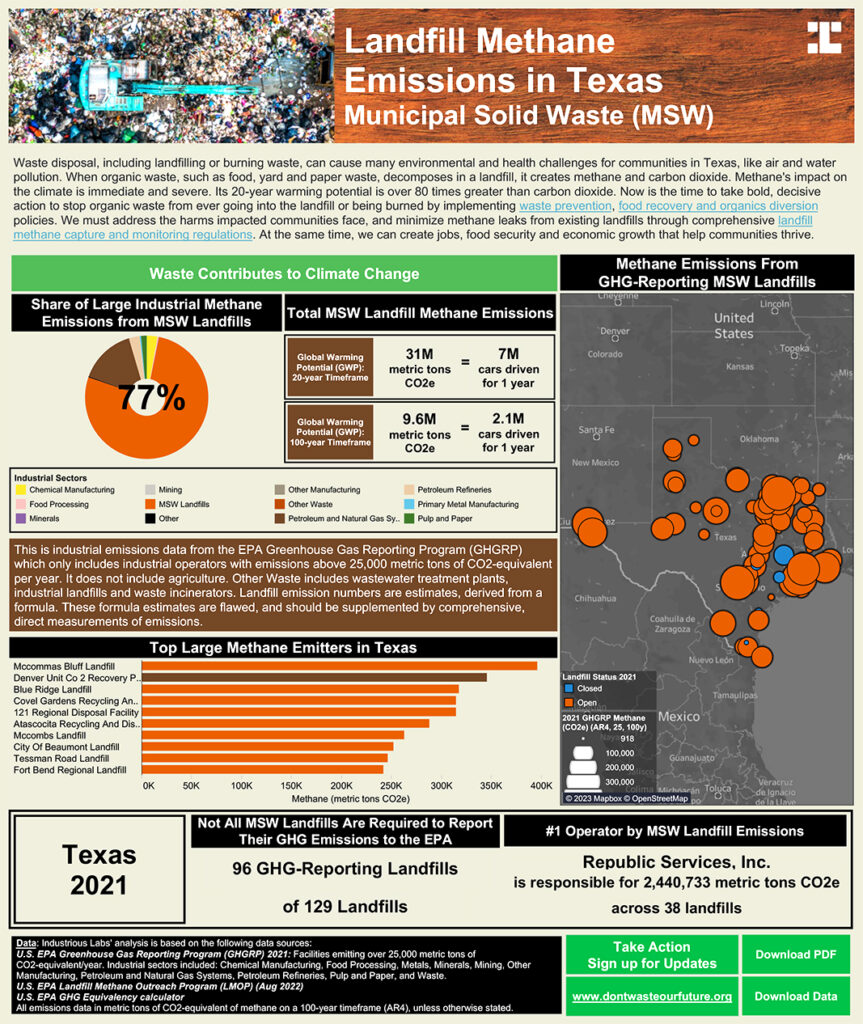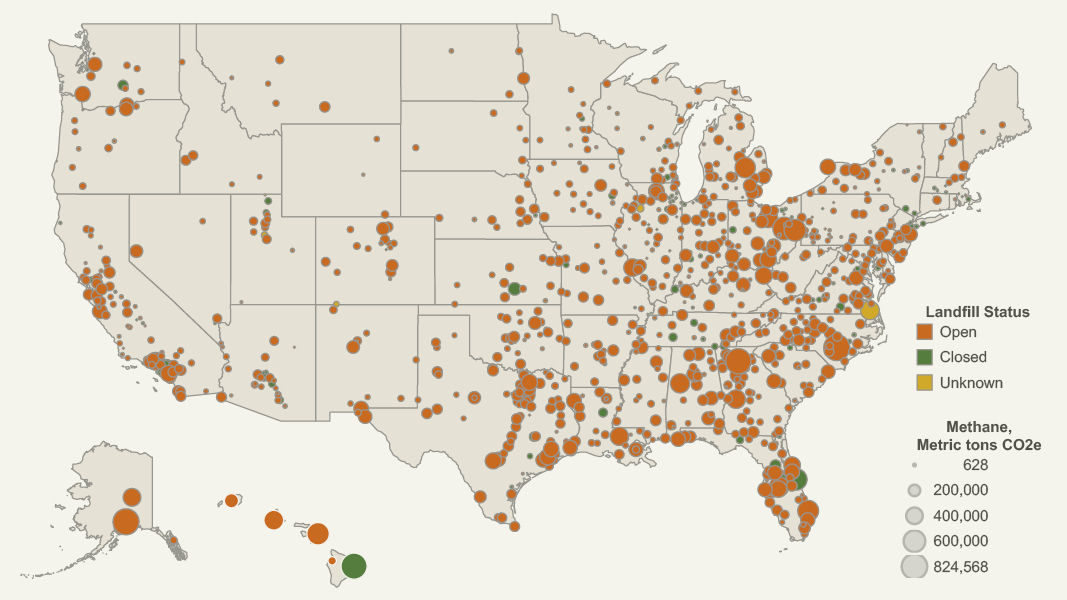Top: Image courtesy Industrious Labs
Industrious Labs released a new analysis that shows municipal solid waste (MSW) landfills were the largest industrial emitter of methane in 2021 in 37 states. Interactive state maps and dashboards that compare landfills to other large industrial emitters are available for all 50 states. Texas leads the top five states for landfill methane emissions, followed by California, Florida, Ohio and Georgia. “Landfills are out of sight for most Americans, but our analysis reveals landfills are the biggest industrial source of methane emissions in most states,” notes Katherine Blauvelt, Circular Economy Campaign Director for Industrious Labs, a network of strategists and others who create campaigns to “put climate solutions to work”. “Organic waste, mostly food, causes methane emissions with severe short-term global warming potential, and these emissions are both underreported and under regulated. We’ve made this interactive tool so that everyone can see for themselves what these landfills are reporting in terms of estimated methane emissions. It’s really about shining a light on an industry that’s been in the dark. You can bring this information to your local, state and national elected officials to advocate for change.”

Example of state specific information (Texas). Image courtesy Industrious Labs. Click to enlarge image.
The analysis uses data provided by industrial operators with the largest greenhouse gas emissions to the U.S. EPA Greenhouse Gas Reporting Program. The Don’t Waste Our Future campaign is asking the EPA to move immediately to revise regulations already on the books — the New Source Performance Standards and Emission Guidelines for Municipal Solid Waste Landfills. “The regulations simply need to be updated to better control methane emissions, using cost-effective solutions and best available technologies,” says Blauvelt. “Some states have already adopted regulations utilizing proven technologies and practices that better manage emissions at landfills. In addition, we’ve got to walk and chew gum at the same time: we should limit methane coming from waste sitting in landfills and divert organic waste from getting into the landfill so it’s not there to make methane in the first place. The fact that once the organics — food, paper, yard waste — are in the landfill and could generate methane for decades really shows that the stakes are high. It highlights how important it is to divert organic these materials.”
Industrious Labs is working with a diverse set of stakeholders to determine what additional data would be most useful in the dashboard. Blauvelt notes that data showing who is impacted by landfills in a community and what the impacts are, is something many groups have said would be valuable. “We know that there are inequities that need to be remedied,” she says. “An analysis by the Environmental Integrity Project found that 54% of landfills reporting to the Greenhouse Gas Reporting Program are surrounded by communities (within a 1-mile radius) that have a higher percent than the national average of residents who are people of color or considered low-income residents. Landfills are also more likely to be in communities of color when they are in densely populated areas.”













